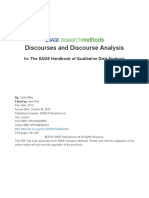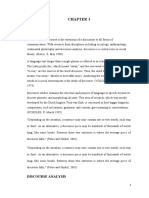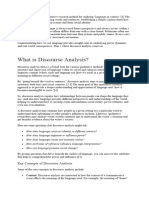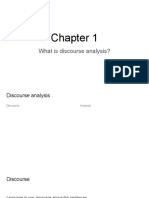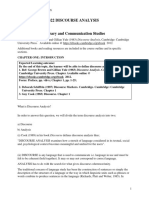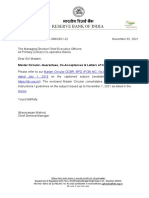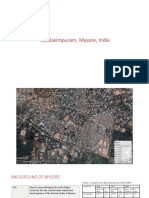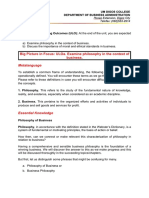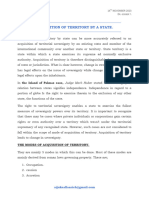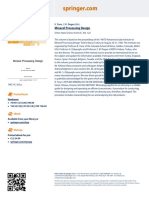0% found this document useful (0 votes)
10 views3 pagesDiscourse Analysis
Discourse analysis (DA) and conversation analysis (CA) are approaches rooted in semiology and ethnomethodology, focusing on how language constructs social reality. DA examines naturally occurring language to extract social and cultural meanings, while CA is a narrower subset that analyzes conversational interactions. Key themes in DA include the constructive nature of language, its rhetorical organization, and its role as a form of action influenced by social context.
Uploaded by
kanupriyaCopyright
© © All Rights Reserved
We take content rights seriously. If you suspect this is your content, claim it here.
Available Formats
Download as DOCX, PDF, TXT or read online on Scribd
0% found this document useful (0 votes)
10 views3 pagesDiscourse Analysis
Discourse analysis (DA) and conversation analysis (CA) are approaches rooted in semiology and ethnomethodology, focusing on how language constructs social reality. DA examines naturally occurring language to extract social and cultural meanings, while CA is a narrower subset that analyzes conversational interactions. Key themes in DA include the constructive nature of language, its rhetorical organization, and its role as a form of action influenced by social context.
Uploaded by
kanupriyaCopyright
© © All Rights Reserved
We take content rights seriously. If you suspect this is your content, claim it here.
Available Formats
Download as DOCX, PDF, TXT or read online on Scribd
/ 3





















